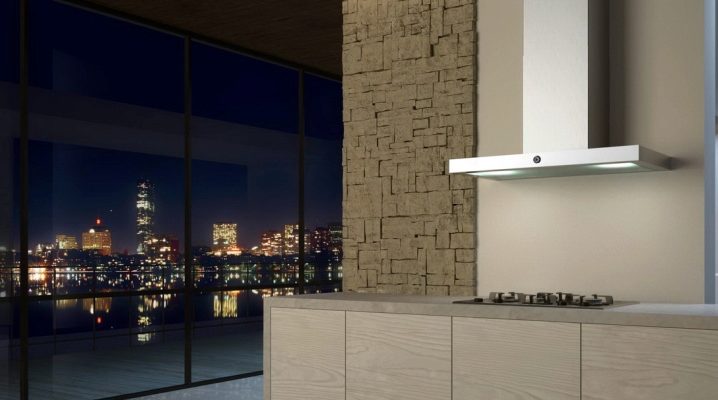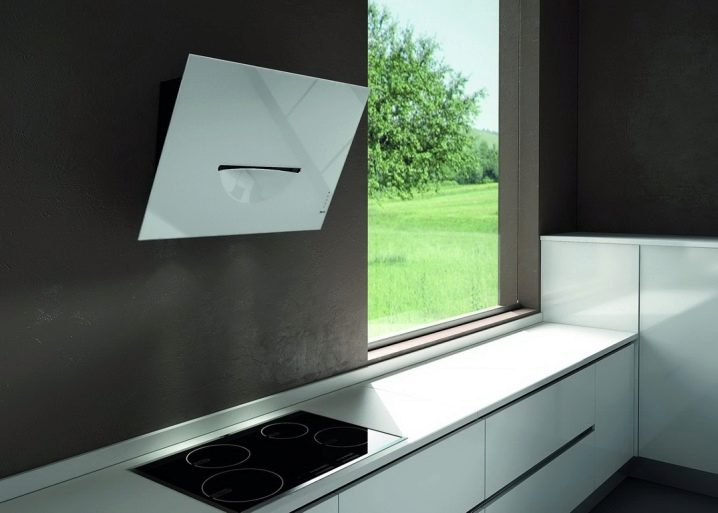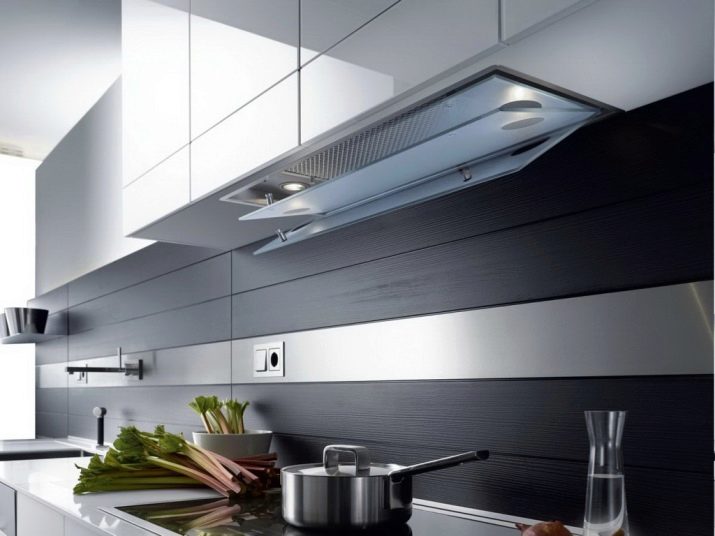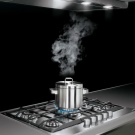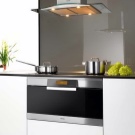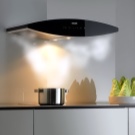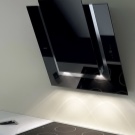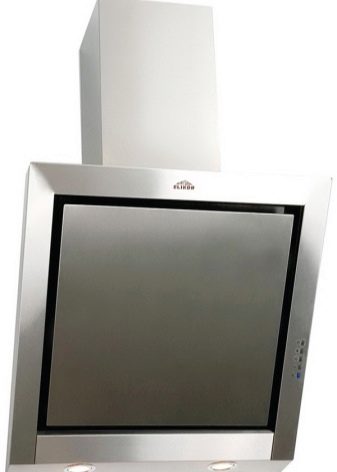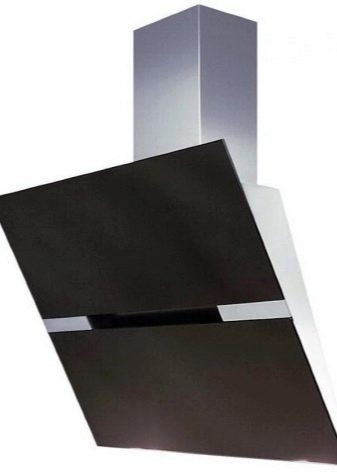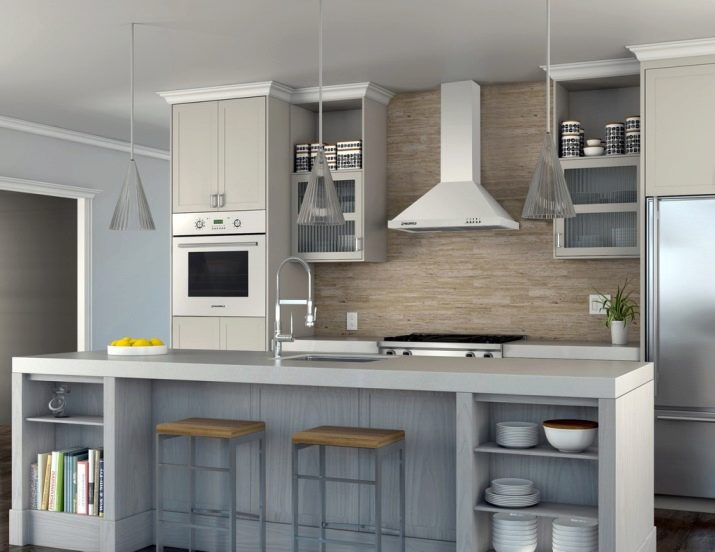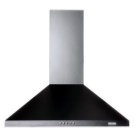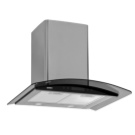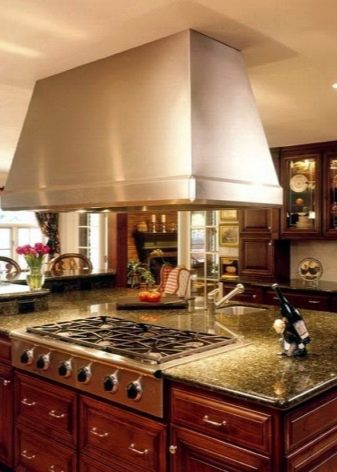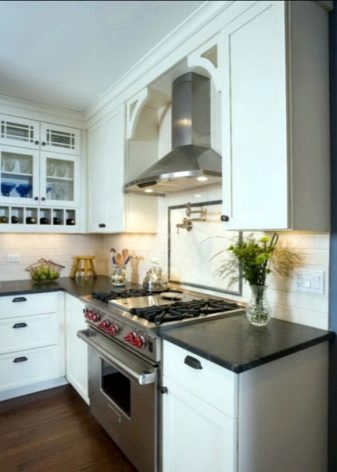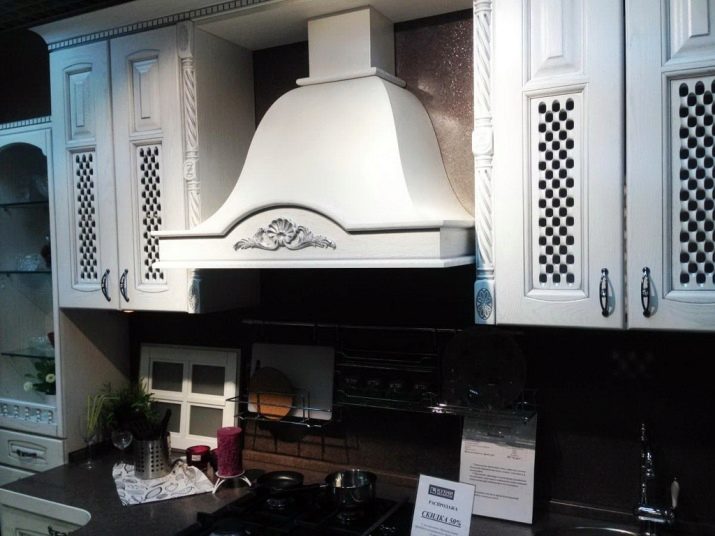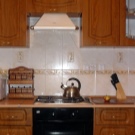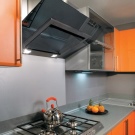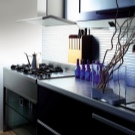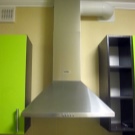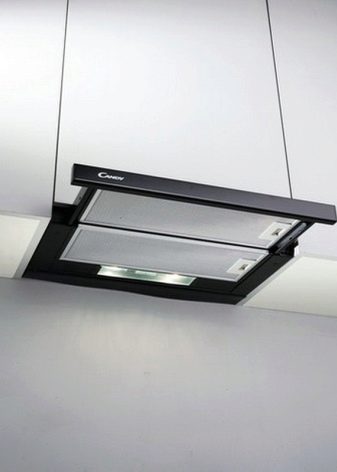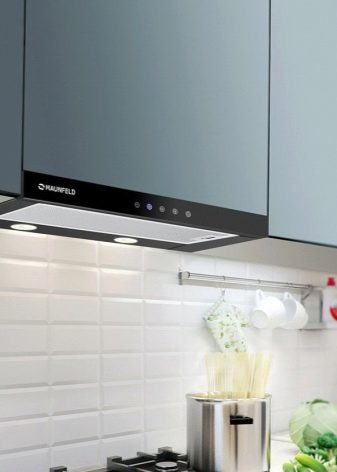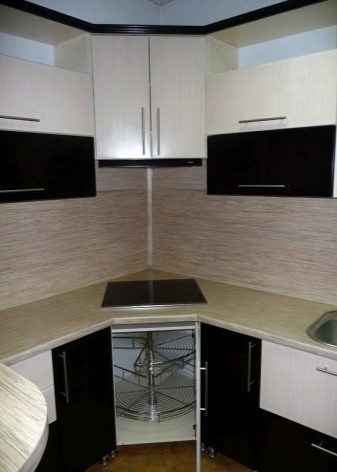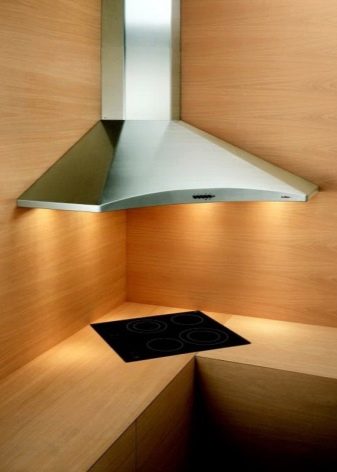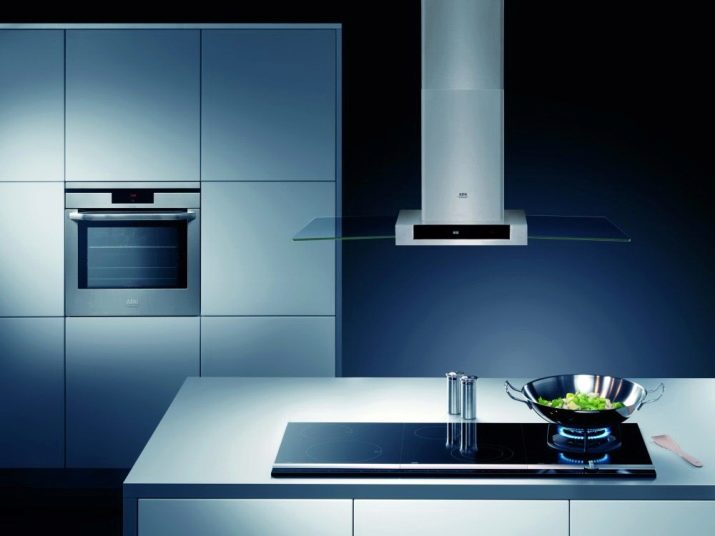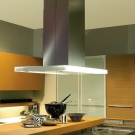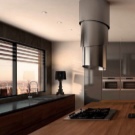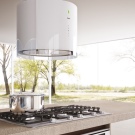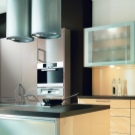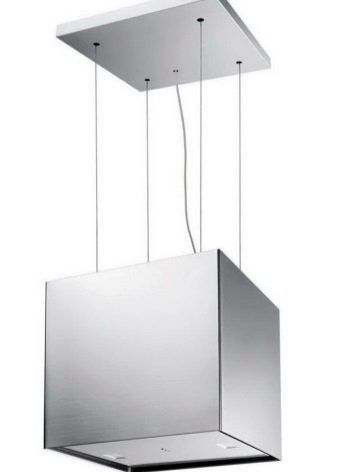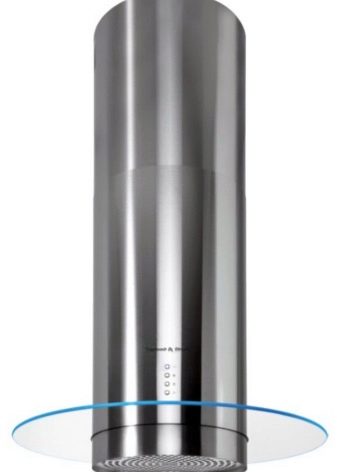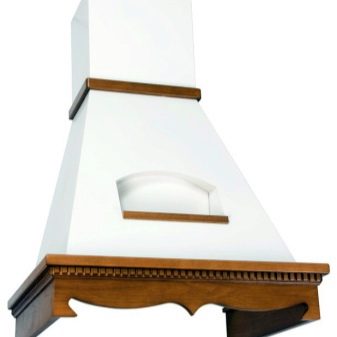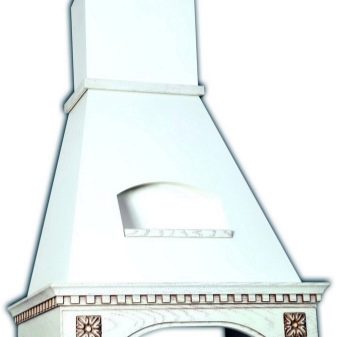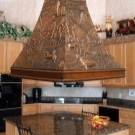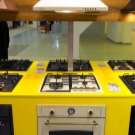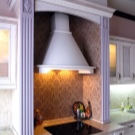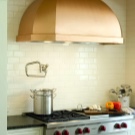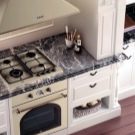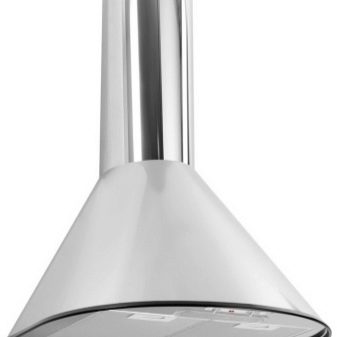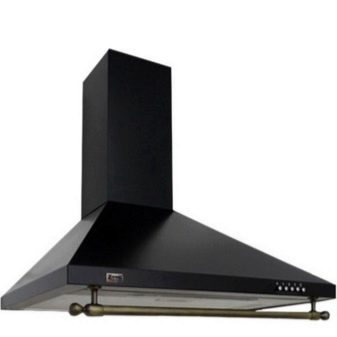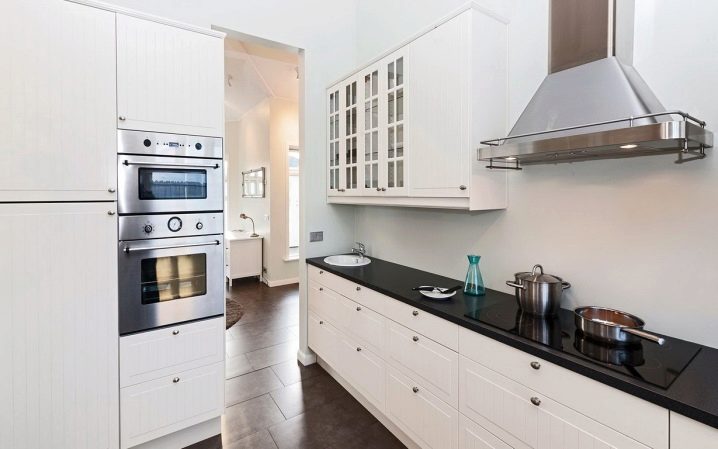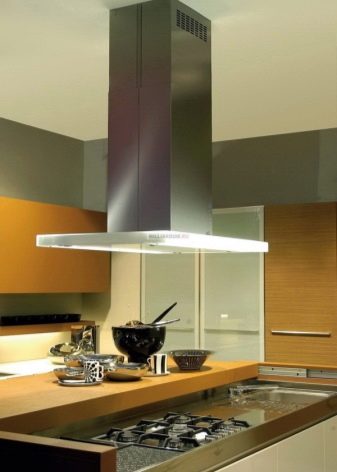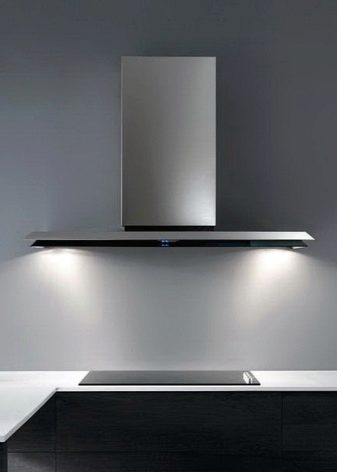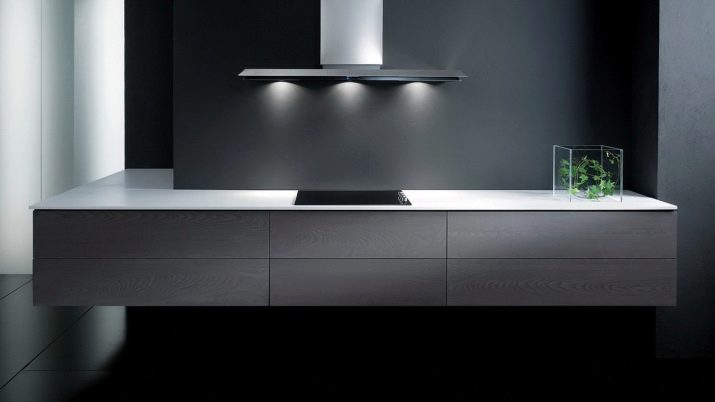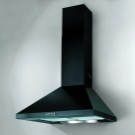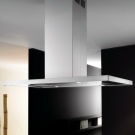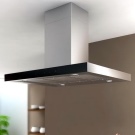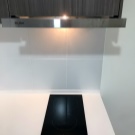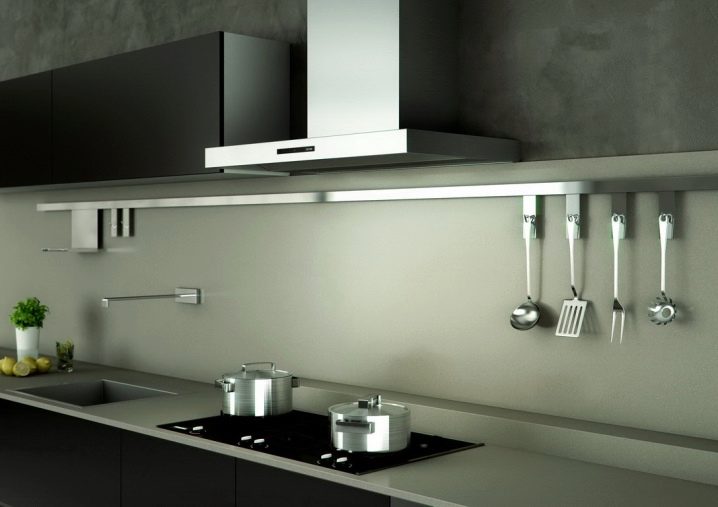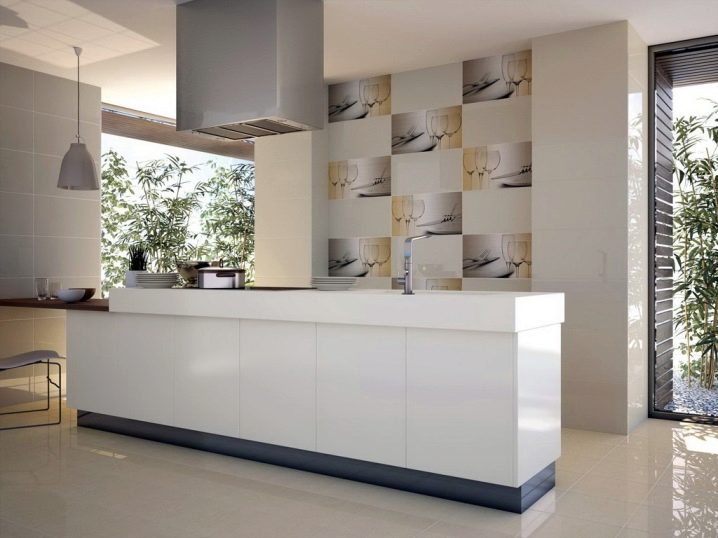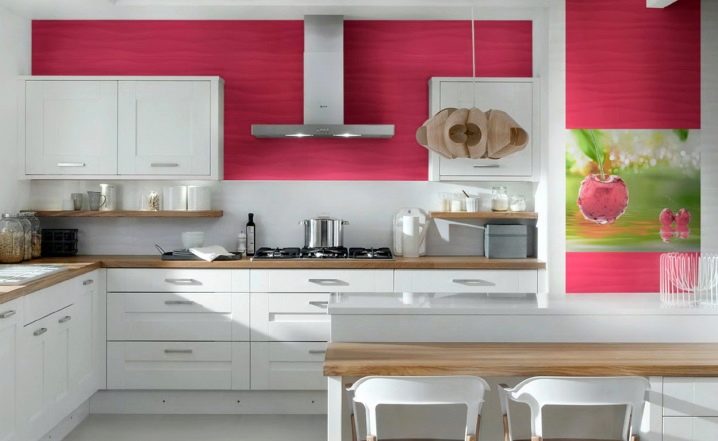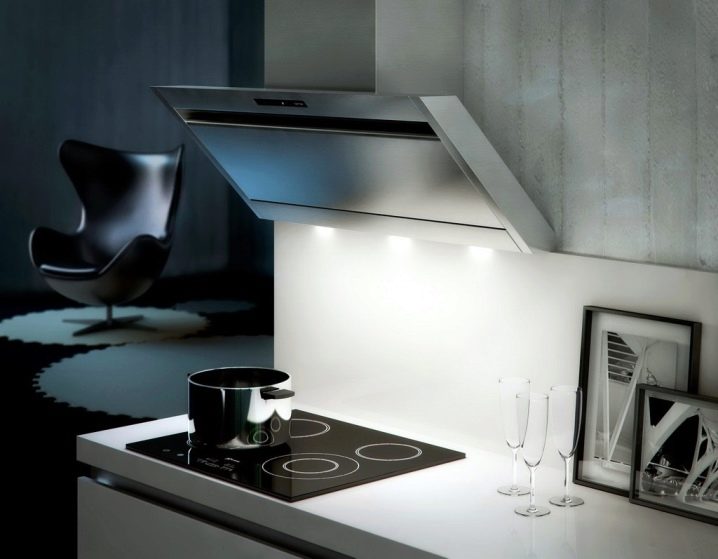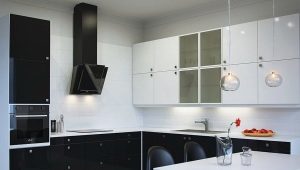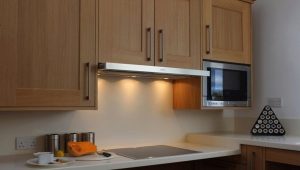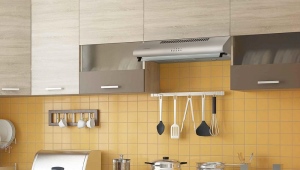Dome hood for kitchen
The kitchen hood is a device that is installed above the stove and picks up odors and soot. Besides the fact that it does not allow odors to creep away from the kitchen to other rooms, the extractor eliminates the products of gas combustion and carcinogens, which affect the quality of the air in the room. And, of course, it prevents fat from settling on furniture, walls and ceilings, producing a tenfold air change per hour, which Sanpin prescribed for cooking time.
Special features
The special feature of the dome hood for the kitchen is its structure: the built-in fan draws in fat and odor on the grease trap filters and leads the remains to the ventilation through the pipe. Dome hood, no matter what form it is, is always connected to the ventilation shaft. Back from the mine due to the difference in pressure enters the new air. These hoods provide 100% air purification in the room.
The standard width of the dome hood is 60 cm, it can filter up to 1000 cubic meters per hour. However, the performance depends not only on the size of the hood, but also on the area of the room in which it is installed.
Dome hoods have a low noise level of 35 to 50 dB. Noise depends on the mode of operation. In a very quiet mode, the hood has 35 dB, in a quiet mode - 45 dB (in terms of noise, this can be compared with soft music), in normal mode the noise will be 50 dB. The higher the performance of the hood, the greater will be the level of noise that it emits.
I would like to clarify that the flat (circulating) hood has noise up to 90 dB, this is due to the fact that it has to suck air through two carbon filters.
The level of generated noise depends not so much on the speed and noise of the motor, as on the strength of the air drawn in by the exhaust.
Dome hoods can have several types of filters. There are classic models with a getter only, and there are newer ones with an additional fat and carbon filter. Filters can be both external and internal. Removable filters are installed outside and retain grease.Internal filters eliminate unpleasant odor.
The disadvantage of the dome hood with the mode "on tap" is the complexity of installation. If the apartment has its own ventilation duct, then there should be no problems with the installation, you only need to clarify the channel size in the management company. And if you connect the hood in the general ventilation, it can disrupt the ventilation system of the entire house. Fat and soot, settling on the walls of the mine, narrow it, and ventilation does not cope. In addition, the smells from your apartment will penetrate into the apartments of other residents of the house. The exhaust can emit air up to 200 m3 / h, and the ventilation shaft is designed for 110 m3 / h.
Kinds
- Recessed dome hoods differ from others only in that they are built into the kitchen. Due to the fact that the dome is not visible, it is usually made from the simplest materials and has an unremarkable appearance. The main materials for the dome of the built-in hood - stainless steel without coating. The downside of the built-in hood is that its portal will not cover all the burners on the stove. In order for the cooking surface to be completely under the hood, the cupboard for it must have a depth of at least 80 cm, and the standard depth of the wall cabinets is 30 cm.
- Hinged hoods do not apply to dome. These are the models having coal filters and mounted under a usual case. These include inclined hoods that are attached to the wall, but have a surface located at an acute angle. The characteristics indicate that such hoods have a noise level below 40 dB, but then the question arises about the effectiveness of their work. After all, if the panel with filters is not located above the hob, the suction power of the air should be higher, therefore, the noise level is higher.
- Corner hoods for those hobs that are located in the corner of the room. In addition to the interesting appearance, they have another advantage, they are easier to integrate into the furniture. These hoods differ from the chimney only in their location, they also have a casing built into the ventilation and can work in air filtration mode.
- Island hoods These are those that are attached to the ceiling, not to the wall. They can be installed anywhere in the room and are often used in kitchens, where the worktop and hob are located in the middle of the room. The air vent for such a hood is vertical, but it assumes the possibility of removing the pipe through the ceiling to the ventilation.
Island hoods are premium class, they are designed for large rooms with high ceilings, they can be made in any design and have many additional functions: height adjustment, several backlighting options, remote control. The cost of island towers starts from 40 000 rubles. Have a high noise level due to high power.
Separately, I would like to say about the domestic brand of hoods Elikor, which produces models that fit the harsh realities of classic Soviet-Russian kitchens.
Interior design
The hoods are not only a functional kitchen device, but also an integral part of the design of the room. Despite the fact that most of the hoods have a standard shape and a standard casing for the air outlet, they can be entered into almost any design. The fact is that manufacturers make decorative covers in any style. Therefore, a conventional stainless steel case can be sheathed with wood, plastic, glass and other materials. There are ready-made solutions in the style of country, hi-tech, classic and others.
Hoods, the appearance of which can be adjusted to any design, belong to the premium class. This is usually an island model.Their bodies are made of a variety of materials, they can be of different shapes and sizes: at least a regular round tube, if your plate is round. And some manufacturers decorate housings with mosaics and ceramic inserts.
There are original hood in the form of an umbrella, which is attached to the table top. These are, as a rule, hinged type hoods (flat, recirculation).
Tips for choosing
Only a well-chosen hood can relieve your apartment of food odors, and the hostess from the endless washing of the kitchen set from grease and gas combustion products.
To find out what range of performance you need to install in the kitchen, it is necessary to multiply the floor space by the height of the ceilings. Multiply the result by 12 (compliance ratio for the kitchen), and then by a factor of 1.3 (the width of the ventilation shaft and the effort to pump air through it for high-rise buildings).
For a kitchen in a standard panel apartment at the beginning of the 90s, the performance of the dome hood should be (2.5 mx 3.5 mx 2.6 m) x 12x1.3 = 355 m3 / h. More - at your discretion, less - the hood will not work properly.
For a small kitchen can be limited to a flat hood.If the kitchen is medium in size, then you need a dome.
To work effectively, the size of the hood must match the size of the hob or be larger. If you have a small stove on two burners with a width of 45 cm, then your choice should have a hood of at least 50 cm. It will be incorrect to choose the size of the hood along the edges of the heating elements in the cooker.
The size of the umbrella is important not only in the context of the size of the plate, but also in the context of the height of its installation. If, according to your design, the hood can be set higher than the permissible 80 cm for a gas stove, then the size of the umbrella should be greater than the width of the cooking surface.
If you are planning a fresh renovation in the kitchen and you do not have a hood, then place the cooking surface closer to the ventilation shaft. In the old panel houses, ventilation in the kitchen was done in the corner opposite the gas riser. To mount the hood in such conditions, it is necessary to lay additional covers for the air. The best hood for such conditions - the corner.
If you are not limited in means, pay attention to an extract with the timer. It automatically turns on and off at a specified time.In addition to the timer, the hood can be equipped with a sensor, which automatically increases the operating mode of the device or reduces it. Turbo mode is useful when you have something burned. On modern hoods, the turbo mode is automatically turned on and off after 10 minutes. During this time of the most powerful mode, the kitchen has time to get rid of the smell. According to customer feedback, this is a very useful mode.
Pay attention to the filters. In some dome hoods there are two fat filters: a standard metal with a grid in a small cell (cleaned of fat with the help of means for cleaning plates) and an additional one-time synthetic mesh, which is ejected after it has expired. It is possible to take a hood without a metal grease filter, by itself it does not affect the process of pulling the smell into the ventilation, but it delays those particles that may stick inside the ventilation pipe and cause equipment breakage.
The number of lamps on the hood affects the uniformity of lighting. The best option - 4 lamps. You can cook with them, not including extra light. If you do not need lighting,then one single lamp on the hood can be used as a night light.
